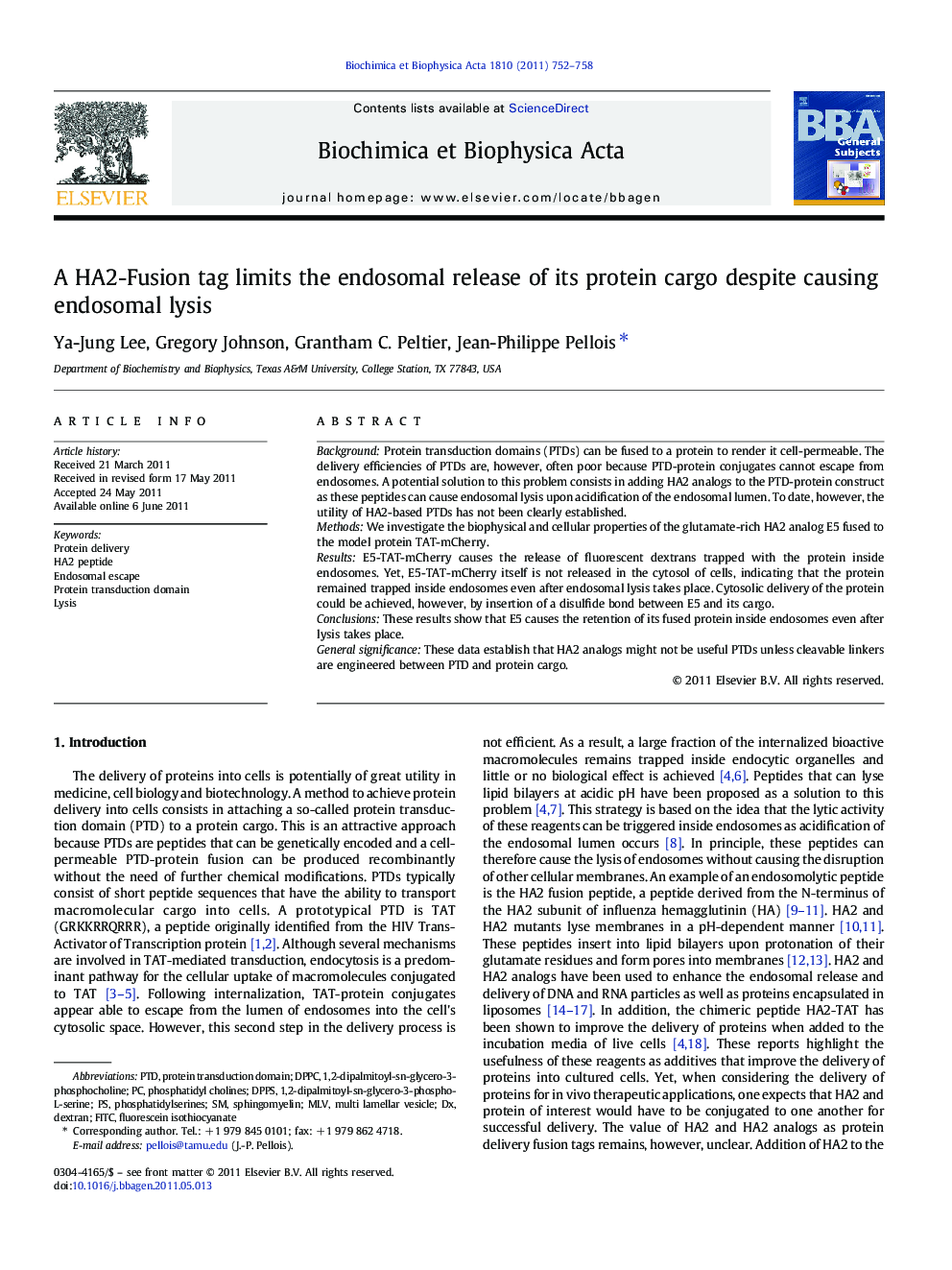| Article ID | Journal | Published Year | Pages | File Type |
|---|---|---|---|---|
| 1947806 | Biochimica et Biophysica Acta (BBA) - General Subjects | 2011 | 7 Pages |
BackgroundProtein transduction domains (PTDs) can be fused to a protein to render it cell-permeable. The delivery efficiencies of PTDs are, however, often poor because PTD-protein conjugates cannot escape from endosomes. A potential solution to this problem consists in adding HA2 analogs to the PTD-protein construct as these peptides can cause endosomal lysis upon acidification of the endosomal lumen. To date, however, the utility of HA2-based PTDs has not been clearly established.MethodsWe investigate the biophysical and cellular properties of the glutamate-rich HA2 analog E5 fused to the model protein TAT-mCherry.ResultsE5-TAT-mCherry causes the release of fluorescent dextrans trapped with the protein inside endosomes. Yet, E5-TAT-mCherry itself is not released in the cytosol of cells, indicating that the protein remained trapped inside endosomes even after endosomal lysis takes place. Cytosolic delivery of the protein could be achieved, however, by insertion of a disulfide bond between E5 and its cargo.ConclusionsThese results show that E5 causes the retention of its fused protein inside endosomes even after lysis takes place.General significanceThese data establish that HA2 analogs might not be useful PTDs unless cleavable linkers are engineered between PTD and protein cargo.
► We investigate the delivery of mCherry fused to the endosomolytic peptide E5. ► E5 causes the lysis of endosomes upon acidification of the endosomal lumen. ► mCherry fused to E5 cannot escape from lysed endosomes. ► mCherry attached to E5 through a disulfide bond can escape from lysed endosomes. ► A cleavable linker between E5 and its cargo is required to increase endosomal escape.
